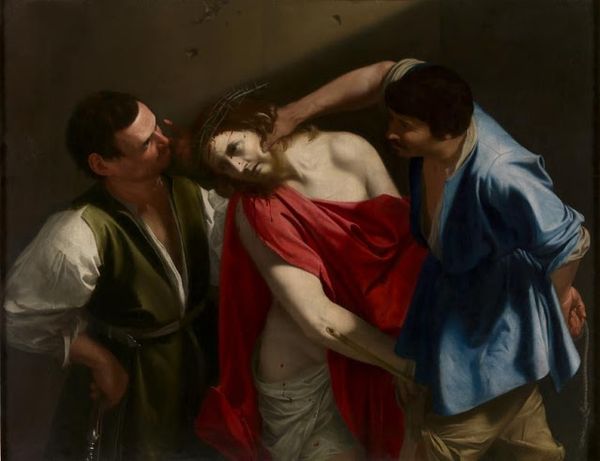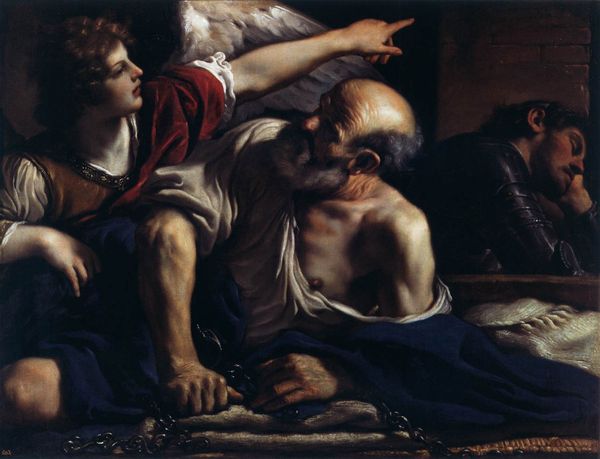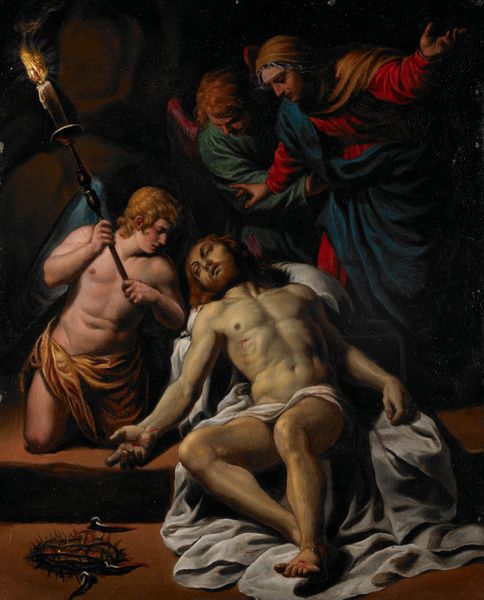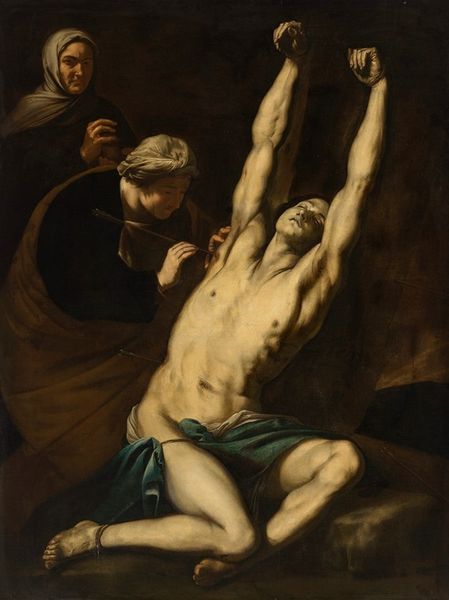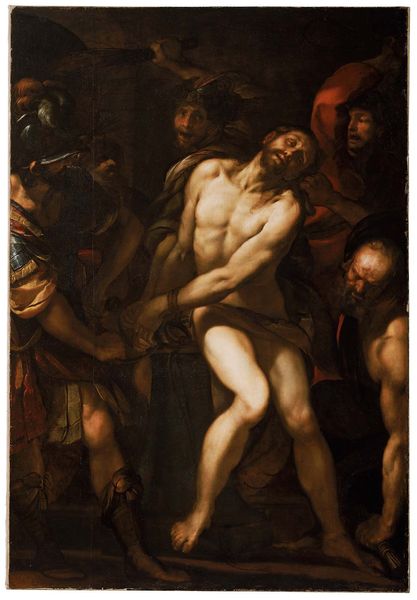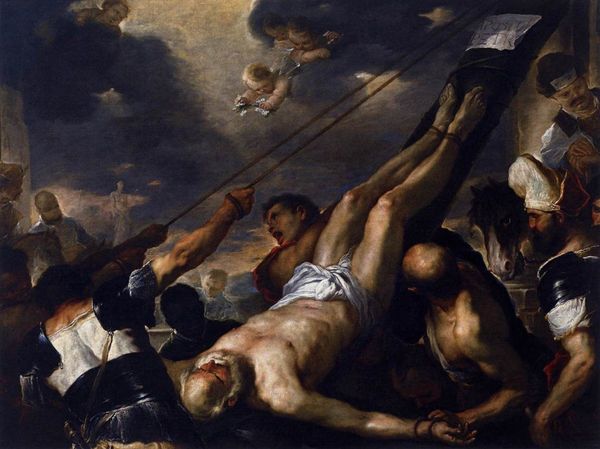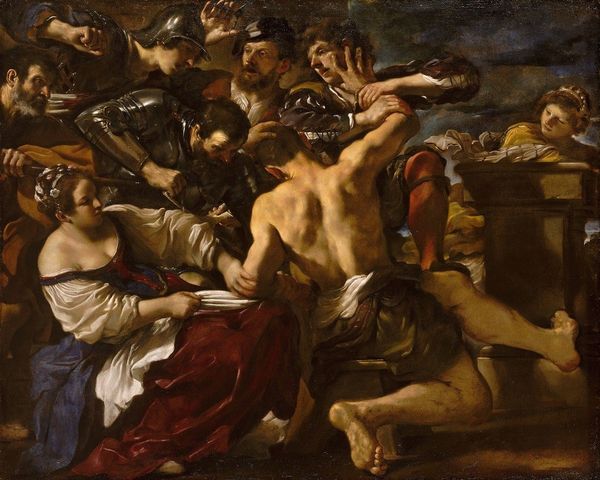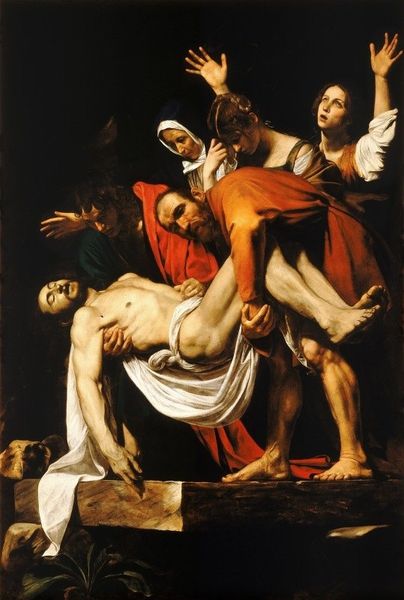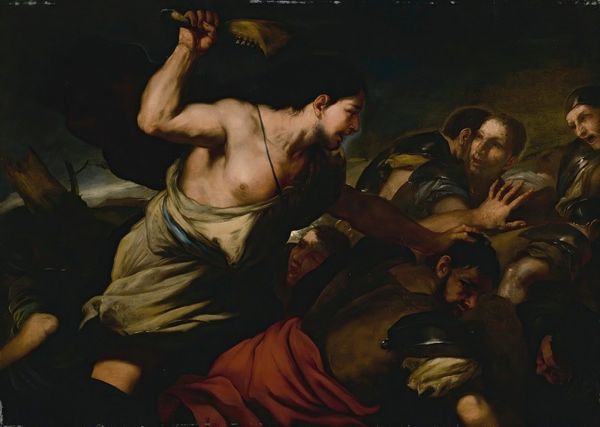
painting, oil-paint
#
narrative-art
#
baroque
#
painting
#
oil-paint
#
figuration
#
chiaroscuro
#
history-painting
Copyright: Public Domain: Artvee
Editor: This is Caravaggio's *The Crowning with Thorns*, an oil on canvas executed sometime between 1602 and 1604. It's immediately striking – the raw emotion, the play of light and shadow... the suffering. How do you read this piece through its formal elements? Curator: Intriguing, isn't it? The composition commands our attention, primarily the concentration of figures and their placement within the picture plane. Observe how Caravaggio orchestrates a dramatic convergence of light and shadow – *chiaroscuro*. Note also how the diagonals created by the figures' arms and the wooden staffs contribute to a dynamic tension. How does this tension speak to the thematic content? Editor: Well, it amplifies the violence, certainly. The diagonal lines almost feel like they're physically pressing down on Christ. And the dark areas contrast sharply with the illuminated flesh, making the scene even more stark and visceral. Curator: Precisely. Now, consider the use of color. Primarily earth tones – browns, ochres – against the vivid red of the drape. The materiality of the paint itself is quite evident, look closely – thick impasto in the highlights, thin glazes in the shadows. Does this layering impact the emotional experience? Editor: I think it does. It makes the scene feel tangible, immediate. The texture adds another layer of rawness, like we're witnessing something unfiltered. Curator: Indeed. The spatial arrangement contributes as well. See how close these figures are in pictorial space, crowding into the frame, increasing the painting’s claustrophobic tension. Editor: That's fascinating, I hadn't fully appreciated how the formal elements work together to create such a powerful, almost unbearable, sense of drama. Curator: Formal analysis enables precisely that: close visual readings that illuminate both composition and intention. Considering form provides a structure of understanding.
Comments
No comments
Be the first to comment and join the conversation on the ultimate creative platform.

